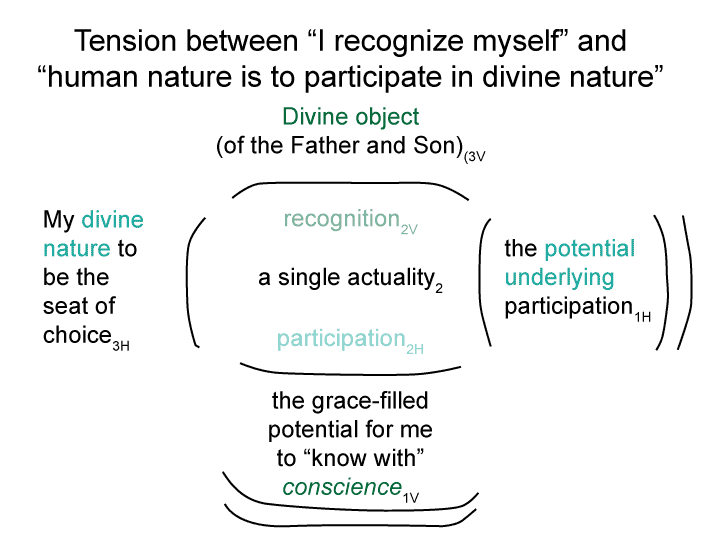Man and Sin by Piet Schoonenberg (1964) 2.2D
[To me, the nested forms of recognition and participation model both grace and self-destruction as actualities.
The state of grace is different from the state of self-destruction.
However, Schoonenberg pays tribute to a different contrast.
Grace (as supernatural) is different from nature (as natural).
This concern belongs to modernism. Modernism focuses on actuality and ignores normal context and possibility.
Or maybe, moderns focus on actuality in order to hide their agendas (normal contexts) and manipulations (biasing what is possible).
The contrast between grace and nature is a stand-in for the contrast between the supernatural and the natural.
Does this distinction belong to the realm of actuality?
Or, does it belong to the realms of normal context and possibility?]

